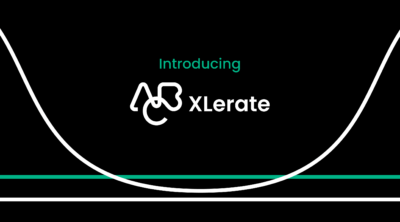Why do your members show up to your gym?
If the answer is to make you lots of money, please stop reading now…
Seriously though, most gym owners worth their salt know that members show up because they desire a particular result. The result could be to lose weight for an upcoming wedding, keep fit in the football off-season, or simply get up the stairs that bit more manageable. A great member experience also drives up attendance, but it’s the results that really matter at the end of the day.
So the question is, how do you ensure they achieve these results?
There is no magic formula. As you well know, members need to consistently stick to nutrition and workout plans to get to where they want to go. But, to keep them on the right path, the secret is to track performance.
Tracking your members’ performance does two critical things. Firstly, it shows them regular progress and motivates them to keep improving. Secondly, it keeps them accountable – if they fall behind, you have robust data to show them where they need to improve.
Advancements in fitness technology mean integrating a tracking system has never been easier. With smartwatches and apps, you have an incredible opportunity to get a detailed overview of a member’s journey. Creating a more personalized fitness experience increases retention and ultimately get results for the member. In this article, we will discuss why fitness tracking is essential and different methods you can use to track member performance.
Skip ahead to:
- Why is Fitness Tracking Important for Members?
- 3 Fitness Goals Members Can Track
- 7 Ways You Can Track Gym Member Workouts and Progress
Why is Fitness Tracking Important for Members?
As we have mentioned in the introduction, keeping track of your clients’ progress is crucial to retaining members long term. Breaking this down even further, let’s take a look at the key factors of motivation, member engagement, recognition, and member experience.
Motivation
One of the most important reasons to track fitness metrics is for motivation. One of the top reasons to quit the gym is a lack of motivation. Finding motivation and staying committed to a workout program long-term can be tough. By showing members how far they have come, you can keep them motivated to hit their goals.
Member Engagement
Although it’s important to reach out to new members, nurturing your current members and building a strong community is essential for member retention. Effective gym member engagement can help you construct lasting connections with your gym community. When you notice a member has lost weight or can lift a heavier weight, it’s an excellent opportunity to send a supportive message.
Recognition
When you track performance, you know when your members’ have hit their goals. This allows you to recognize and celebrate accomplishments. Maybe it’s just a friendly push notification or a free class pass. When you celebrate your members, it increases their motivation to reach their next target. a
Boost Member Experience
Brands with superior customer experience bring in 5.7 times more revenue than competitors who lack customer experience. 73% of customers say a good experience is essential in influencing their brand loyalties. Workout tracking allows you to personalize the fitness experience. If you know your client has a fitness goal, then you might send them information on your latest fitness challenge or offer them a free personal training session to get them started.
3 Fitness Goals Members Can Track
Depending on the individual, you can track different metrics and goals. Encourage your members to track fitness goals so they can see their progress over time. Here are three different goals your members can track. They may want to focus on one or a combination of the three.
Cardio
Swimming, running, and cycling are great options for improving cardiovascular fitness. Members looking to increase endurance, stamina, and overall fitness can track their cardio. Record metrics like distance, time, and how they felt.
Weight Loss
One of the top reasons to join the gym is to lose weight and get in better shape. If your members’ have a specific weight loss goal in mind, the chances are they are already watching the scales. Make sure you document the entire process to show progress and keep members motivated. Offer regular weigh-ins and body measurements to support the weight loss journey.
Muscle Growth
By monitoring strength-training progress and muscle growth, it can help members stay on track and keep moving forward. As the muscle develops, members will be able to lift heavier and heavier. Keep track of things like reps, sets, the weight lifted, and how they felt that day.
7 Ways You Can Track Gym Member Workouts and Progress
Tracking workouts helps to deliver the best results and keeps members at the top of their game. To bring your members the best training experience possible, you need to engage with them inside and outside of the gym while keeping them motivated. Here are seven ways you can track the performance of your members.
1. Check Body Composition and Metrics
As we noted in a previous article on creating a great onboarding process, a full body composition scan provides an excellent baseline for a member starting off. Scans are especially useful when it comes to challenges. F45, for example, require each new challenger to do a scan
The Customer
Engagement Playbook
for Your Fitness
Business
Discover more From this scan, you can then create a more personalized plan to help them complete a challenge and/or meet their goals.
Body composition scans work better than traditional scales as the number on the scales doesn’t tell the whole picture. That’s why it’s so important to take body composition measurements. Often, when you strength train, you’re shedding fat but putting on muscle. By tracking body composition, you have a complete overview. You can take these kinds of measurements weekly. Whether you have a body scan machine, or use a tape measure to check members, jot down key metrics like:
- Body fat
- Weight
- Before photo
- Body circumference measurements
- Muscle mass
- Total body water
2. Workout Journal
A member’s workout journal may be a notebook, a workout journal app, or an Excel spreadsheet. Some people prefer to write down their progress so they can see it more clearly. This is entirely down to personal preference. Although writing in a notebook may sound pretty old school, sometimes the actual act of putting pen to paper can give the member the boost they need to hit the gym.
Regardless of what type of workout journal your members use, it should contain the following information:
- Date and time of the workout
- Planned workout routine (sets, reps, time resting, weights)
- Current bodyweight
With a workout journal, members can plan their workout routine the day before you hit the gym. Once the workout is completed, the member can mark down what they did or didn’t do. A workout journal can be an effective way to achieve success and hit fitness goals. The journal helps members remain consistent, which is key to success.
3. Fitness Apps
There’s a vast range of fitness apps on iPhone and Android that make fitness tracking simple and easy. The global fitness app market has the potential to grow $1.68 billion during the 2020-2024 period. Fitness apps are now an extremely popular option when it comes to sticking to your workout regime and hitting fitness goals. With such an enormous choice of apps, it can be challenging to know where to start.
Whether you’re logging workouts or tracking nutrition, here are some great options for your members to track their performance:
Jefit – the app lets you track and manage your fitness from one place. It has over 1,000 exercises to track as well as the option to add your own. It also creates personalized workout plans for you. You can record your training, and it has better social integration that other fitness apps.
MyFitnessPal – MyFitness Pal is one of the most popular fitness apps available. You can track calories, nutrition, exercise, and it includes features like a step tracker and workout timer. You can also connect to dozens of other apps. The level of integration and depth is much more than other apps.
Strong – Strong is free for iOS, Android, and Apple Watch. It’s easy to log workouts and keep track of your personal bests. You can add data quickly and see a complete history of your records. The free version is limited to three custom routines, but you can save unlimited workouts. With the paid version, Strong PRO, you can save unlimited custom routines, and it unlocks additional features.
4. Monthly Weigh-in or Strength Test
Offer monthly weigh-in or strength tests to monitor your members’ progress. You also have the option to do a monthly fitness test to test cardiovascular fitness. Again, this is a way to keep members motivated and hitting their goals. The monthly check-in is the perfect time to see how members are getting on, increase customer engagement, and see if they need any additional help.
The Business of Fitness Podcast is an excellent resource for gym owners and professionals in the fitness industry. Listen to episode 88 on enhancing engagement and experience with Lindsey Locke. Lindsey is NCFIT’s Head of Social Media and Community Engagement. She discusses tips and tools gym owners can use to increase engagement and show member appreciation.
5. Fitness Challenges
The purpose of a fitness challenge is to help members reach one particular goal. A fitness challenge creates the opportunity to track your members’ performance while increasing engagement and retention. Encourage your gym community to post before, during, and after images of their fitness journey on social media. Here are some ideas for fitness challenges:
- Charity challenge
- Weight loss challenge
- Fitness challenge
- Healthy eating challenge
- Mindfulness challenge
6. Fitness Trackers and Smartwatches
Fitness trackers and smartwatches provide a glimpse behind the scenes of your members’ health. They allow members to track data effortlessly. They also offer daily motivation to get moving, with many trackers featuring inactivity alerts. Fitness trackers can help you set goals and achieve them over time. The majority of fitness apps sync up with various fitness trackers and smartwatches, so it’s simple to save your data and view it on your smartphone. Trackers can also monitor your heart rate; however, the reading tends to be more accurate when wearing a chest strap.
Some of the best fitness trackers to monitor your performance are:
- Fitbit Charge 3
- Garmin Vivosmart 4
- Polar Ignite
- Apple Watch Series 5
7. Celebrate Achievements and Goals
Finally, it’s important to celebrate achievements and goals. When it comes to goal-setting, it’s beneficial to have smaller goals under the umbrella of one big goal. If you break down your big year-long goal into monthly and weekly tasks, it can help members to stay motivated for longer. Always remember to drop your members a message or email when they’re doing really well and have surpassed their goals. If they meet their weight-loss goal and have been training really hard, congratulate them and show them how much you care.
For more advice on creating a unique customer experience, listen to episode #255 Creating a VIP Customer Experience with Matthew Walrath from the Fitness Business Podcast. Matthew is the founder of the online nutrition coaching company, Beyond Macros. He talks about how to get a remarkable client experience that delivers results, increases retention, and gets referrals.
In Summary
Whether it’s with a pen and paper, a fitness app or smartwatch, tracking fitness, and logging workouts can do wonders for motivation. It’s much easier to see how much you’ve progressed when you can see where you started. Keeping members motivated is key to member retention and engagement. By tracking fitness data, you can boost the overall experience and personalize the fitness journey, benefitting both your business and your members.















